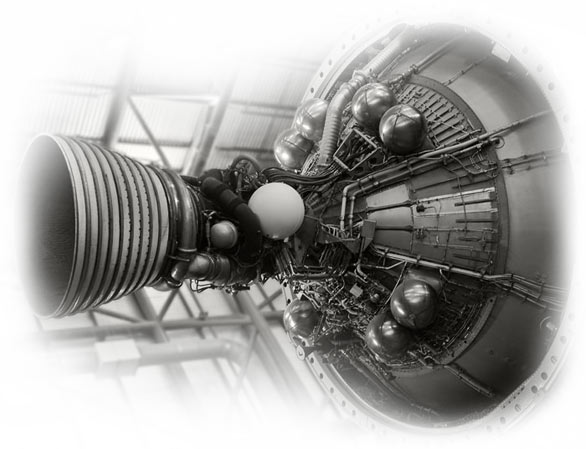#52 Saturn V Rocket
1967
The largest rocket engines built at the time of the first US missions to the moon
The largest rocket built at the time of the historic first missions to the moon, the Saturn V carried aloft the 45-ton Apollo spacecraft on earth orbital and lunar missions from 1967 to 1972. It also launched the 120-ton Skylab into earth orbit on May 14, 1973. Design and fabrication of the Saturn V were carried out by a government-industry team, which included the National Aeronautics and Space Administration, the Boeing Company, North American Rockwell, McDonnell Douglas Corporation, International Business Machines and their subcontractors. Many of the design features were outgrowths of the earlier development work accomplished by military service organizations and their contractors.

For More Information
Lyndon B. Johnson Space Center
1601 NASA Road
Clear Lake City, TX 77058
Visiting Info
For hours, tickets, tours and more, go to: www.spacecenter.org/Hours
Useful Links
Space Center Houston
NASA Kennedy Space Center
Kennedy Space Center Apollo/Saturn V Center
Apollo Anniversary
Boeing site
Ceremony Notes
July 1980; three sites were simultaneously designated (via satellite) for the Saturn V (see also Florida and Alabama).
